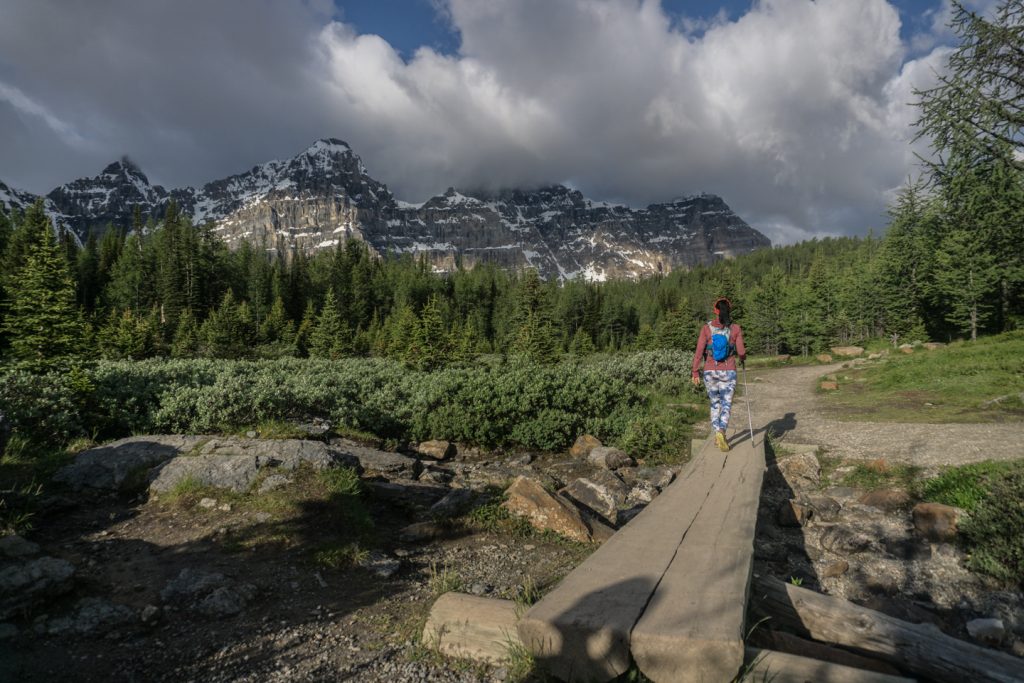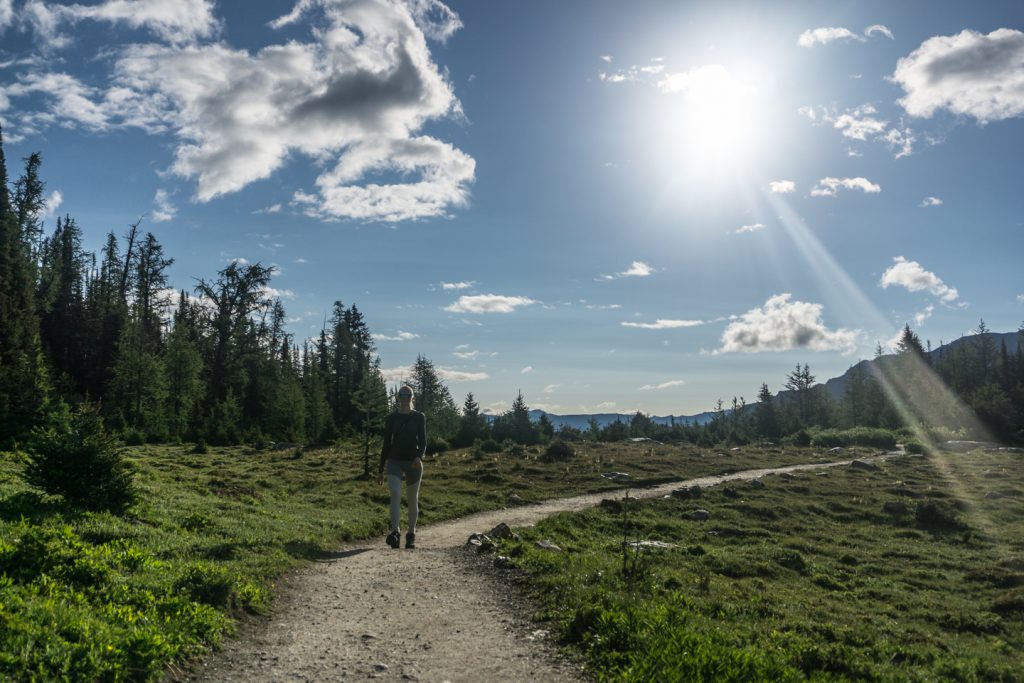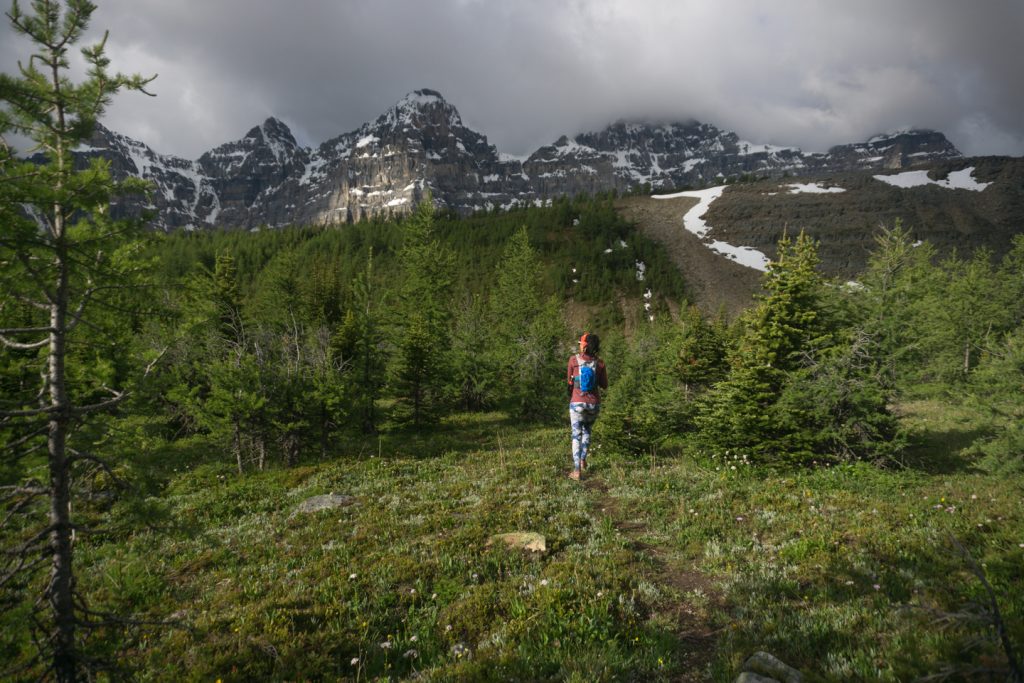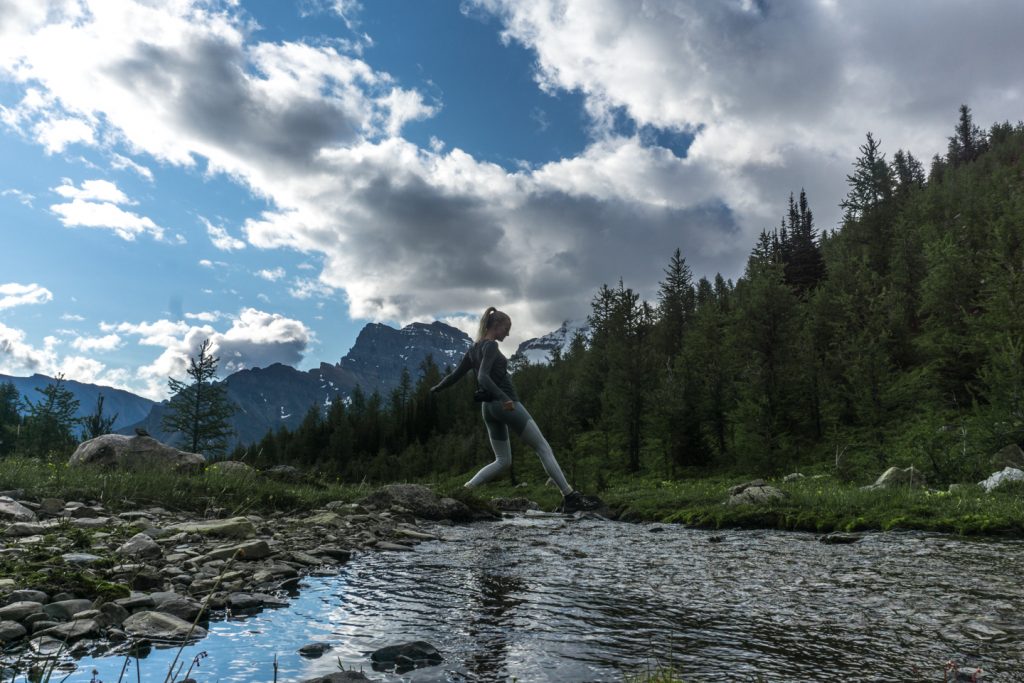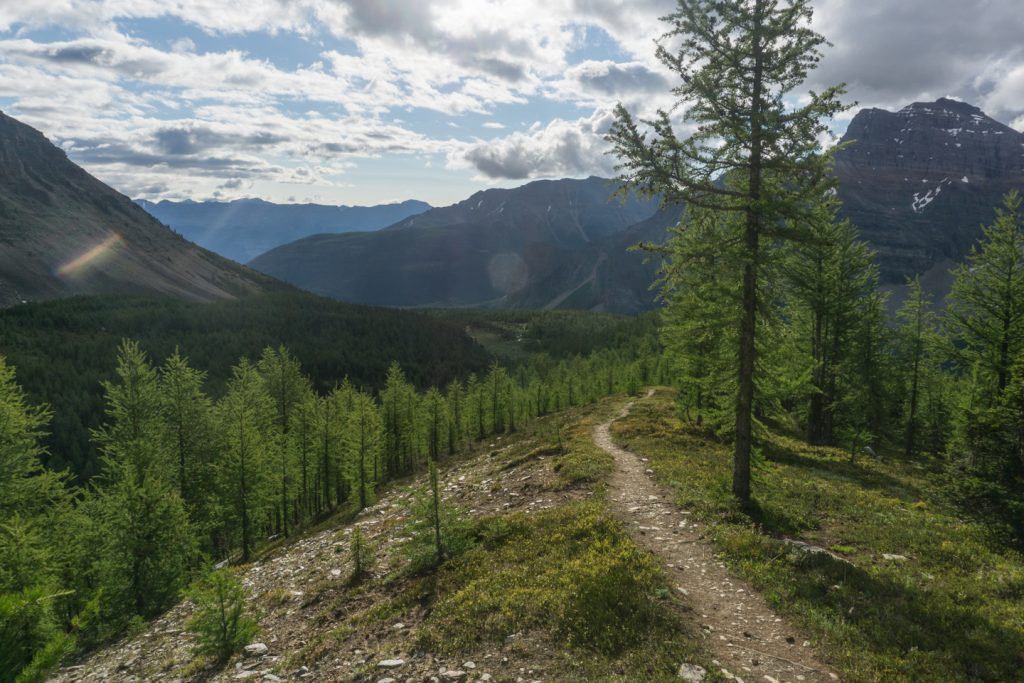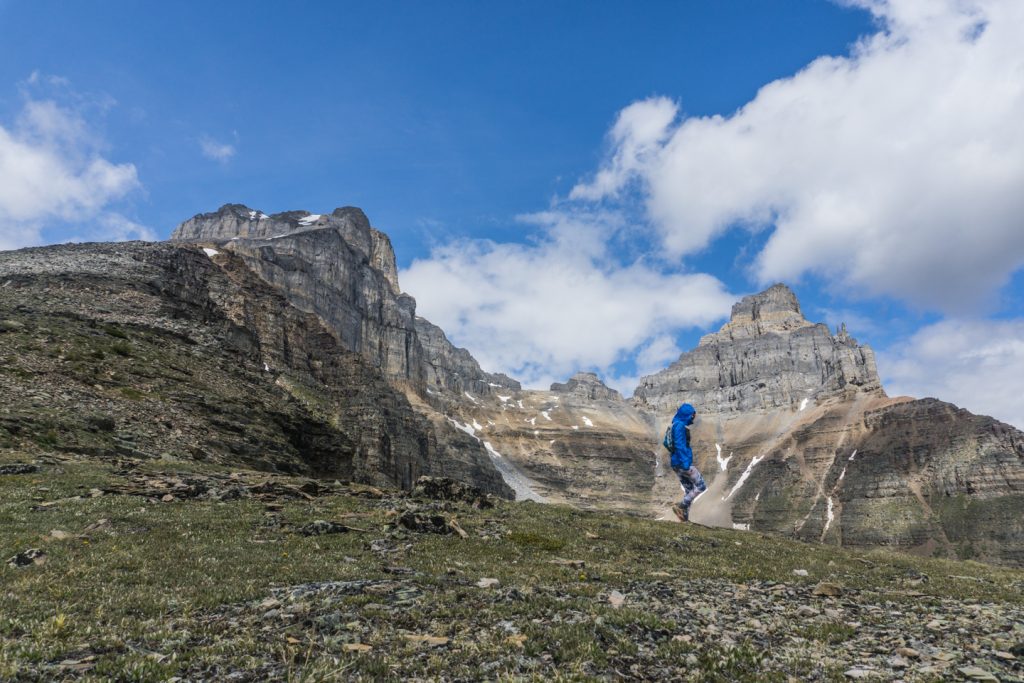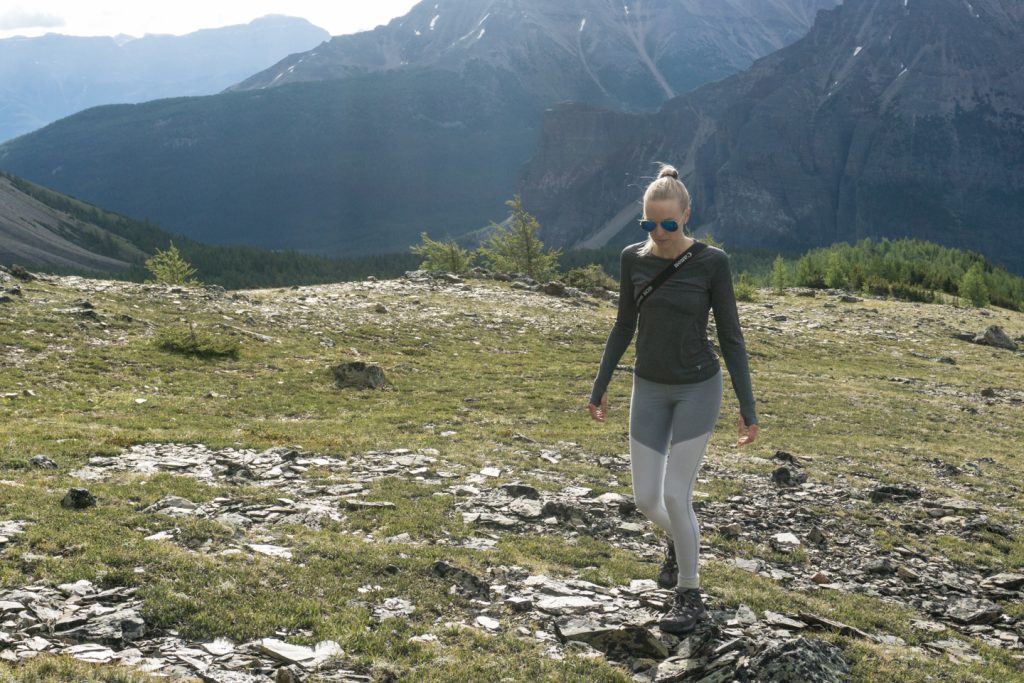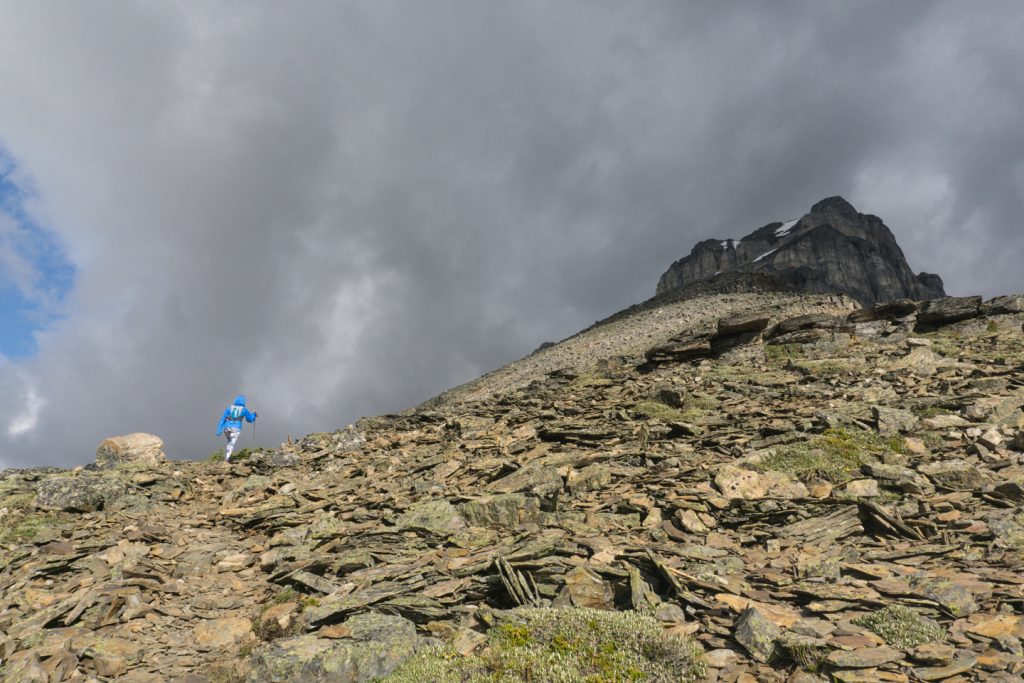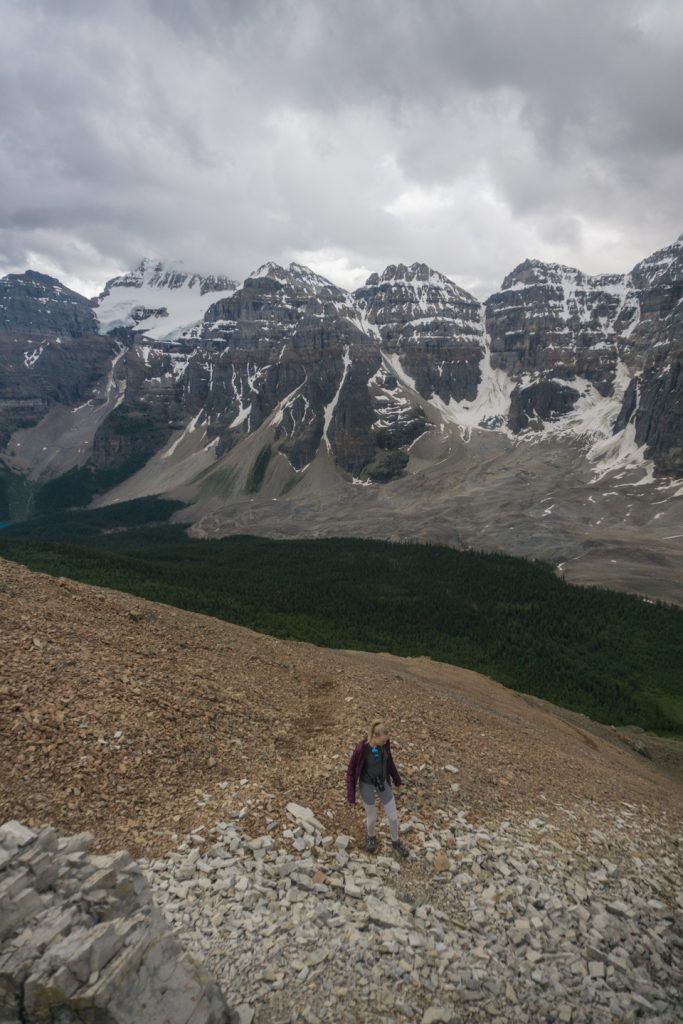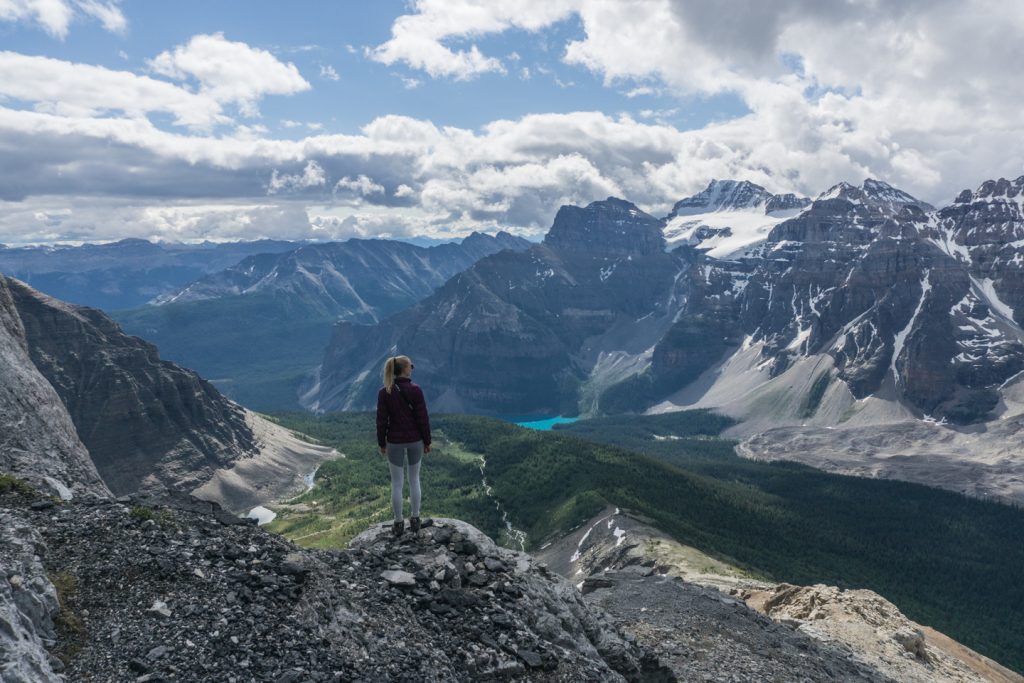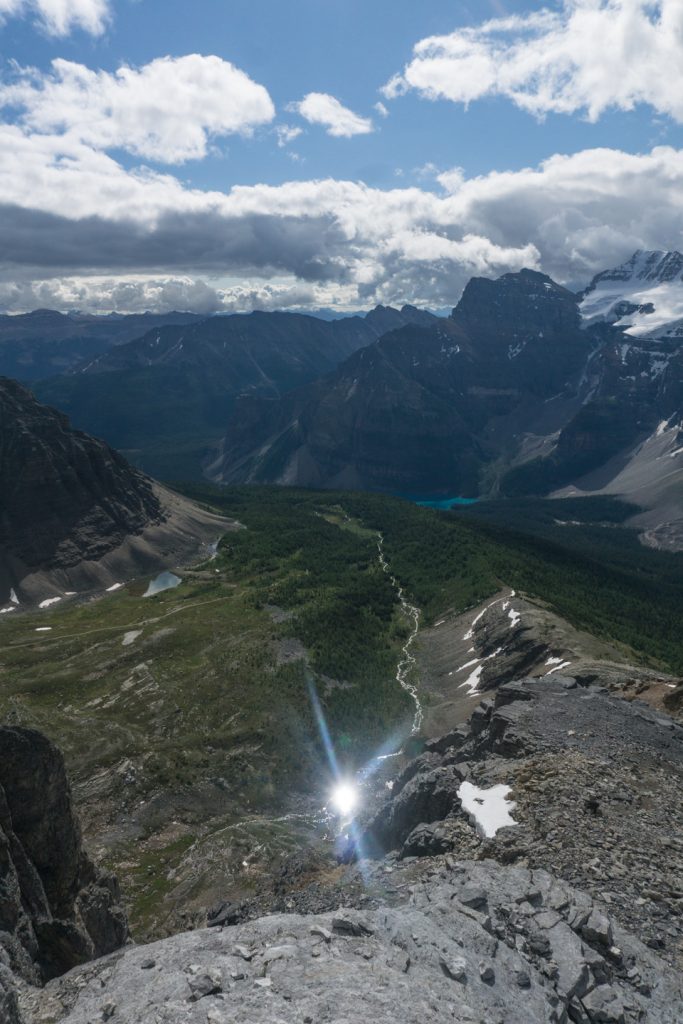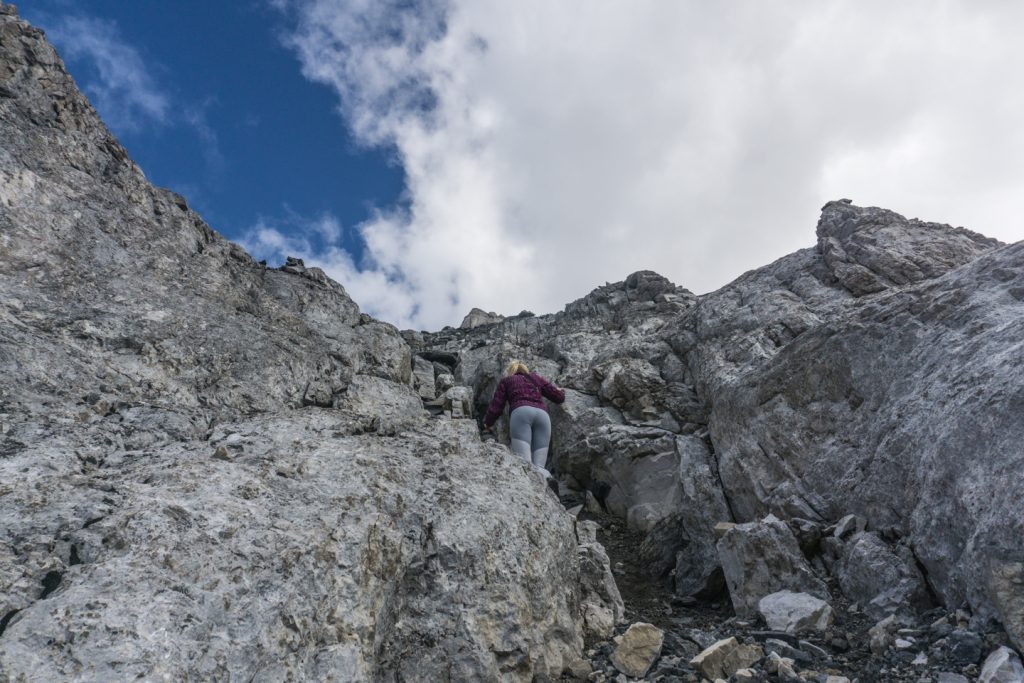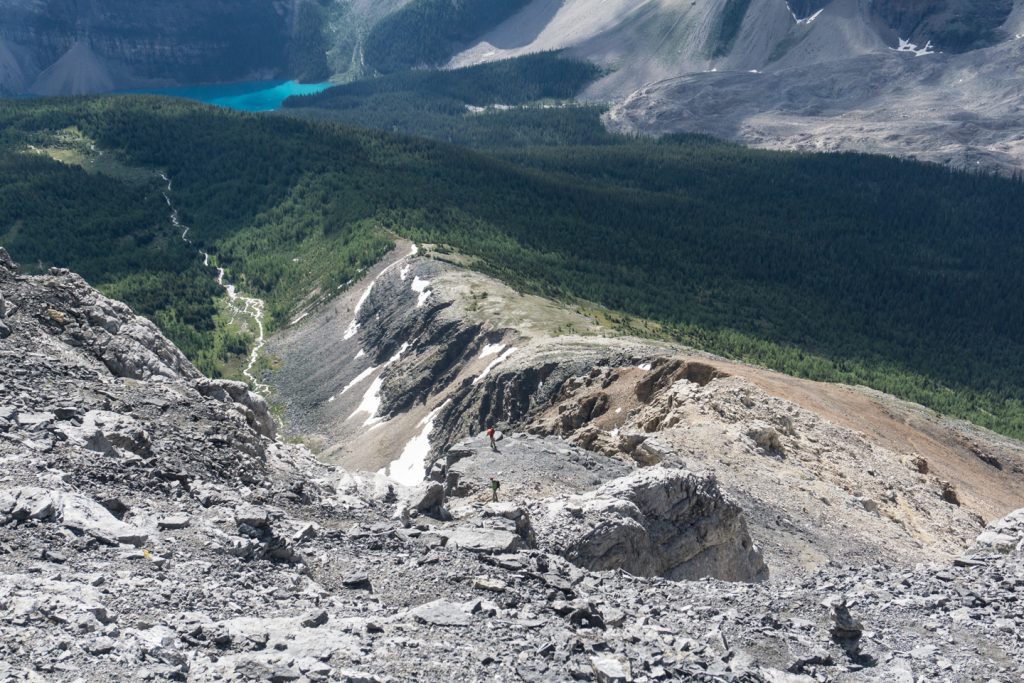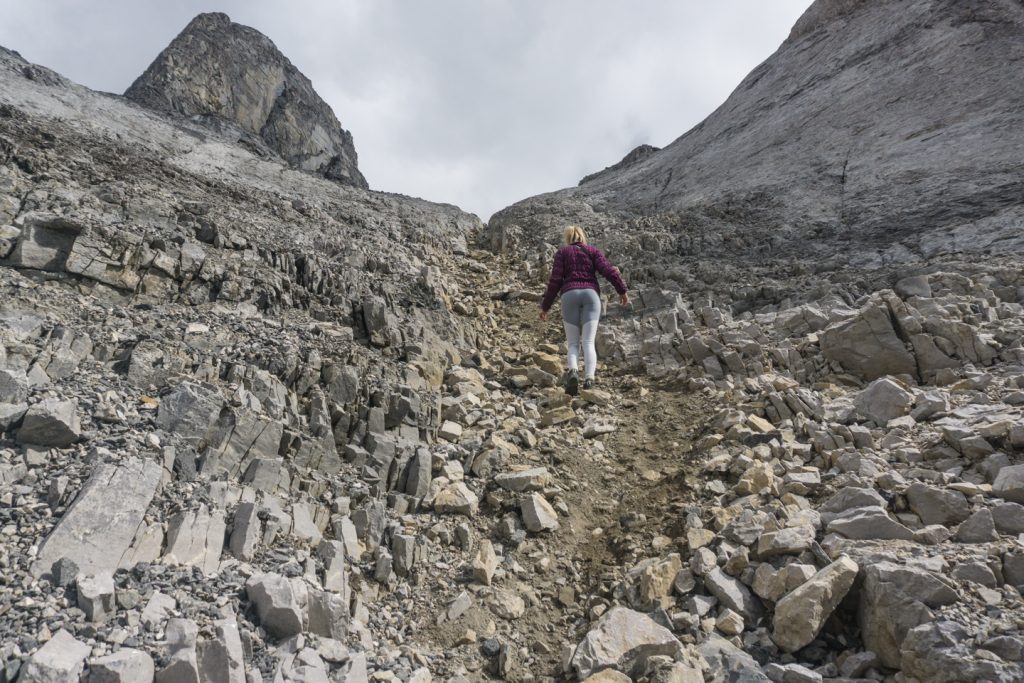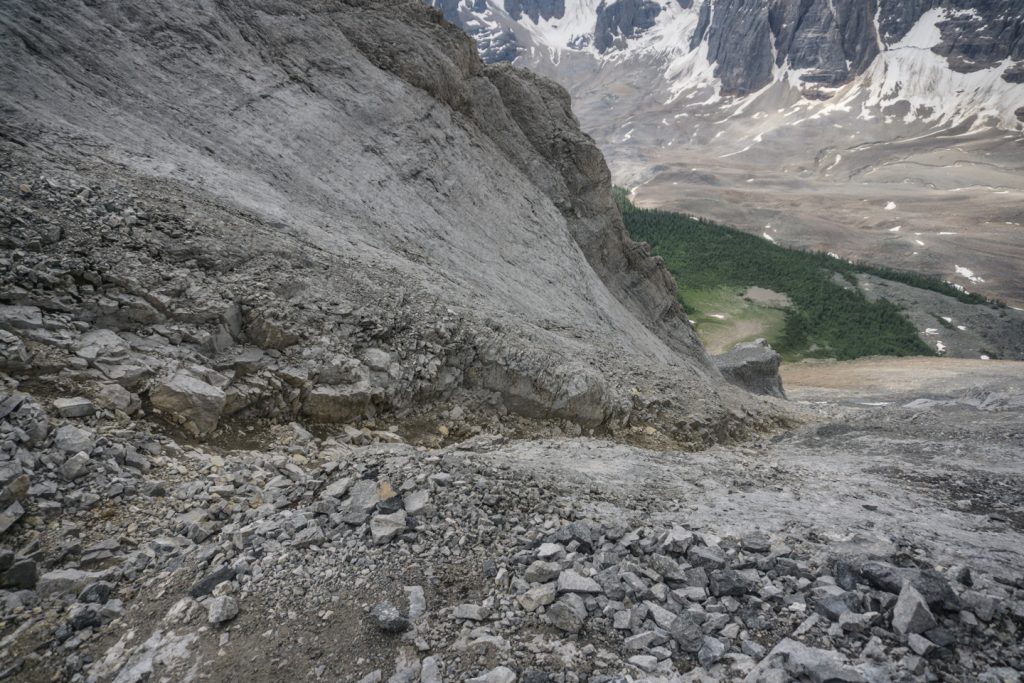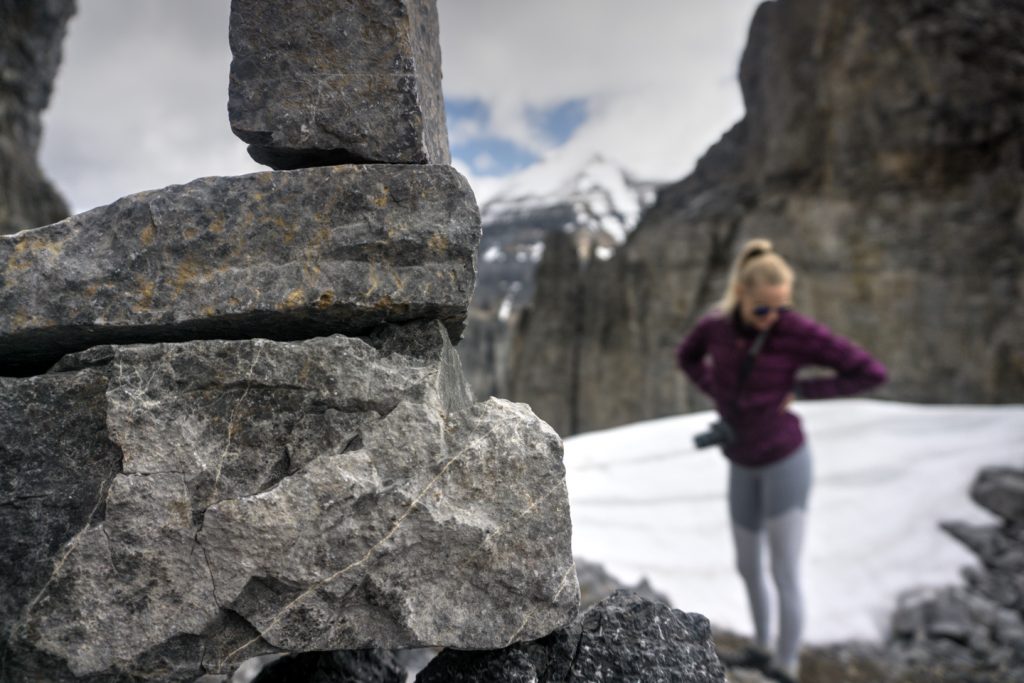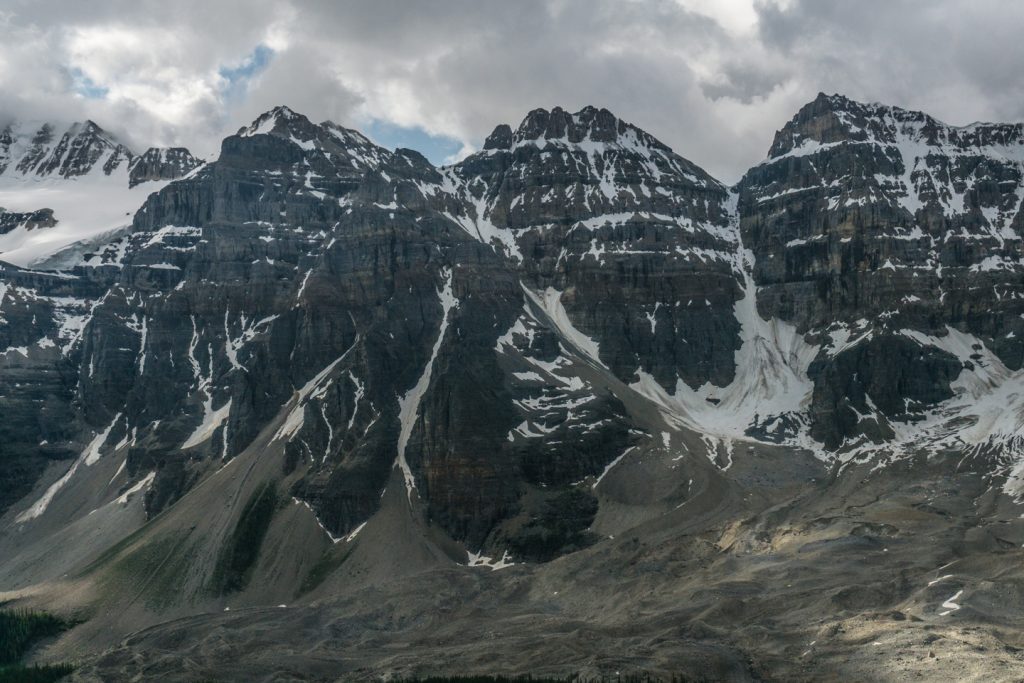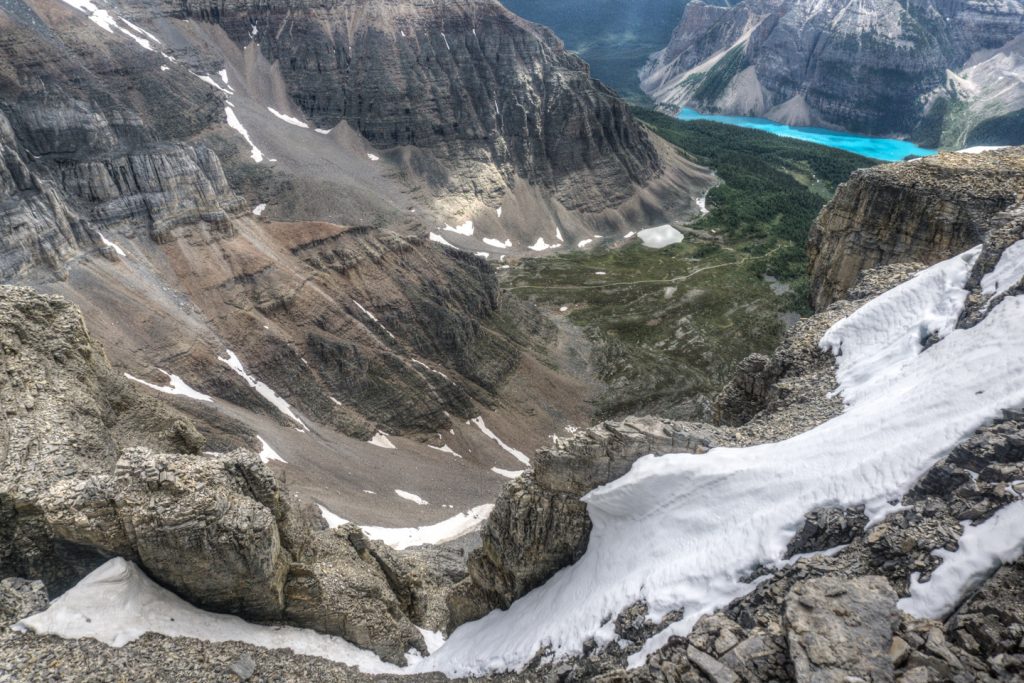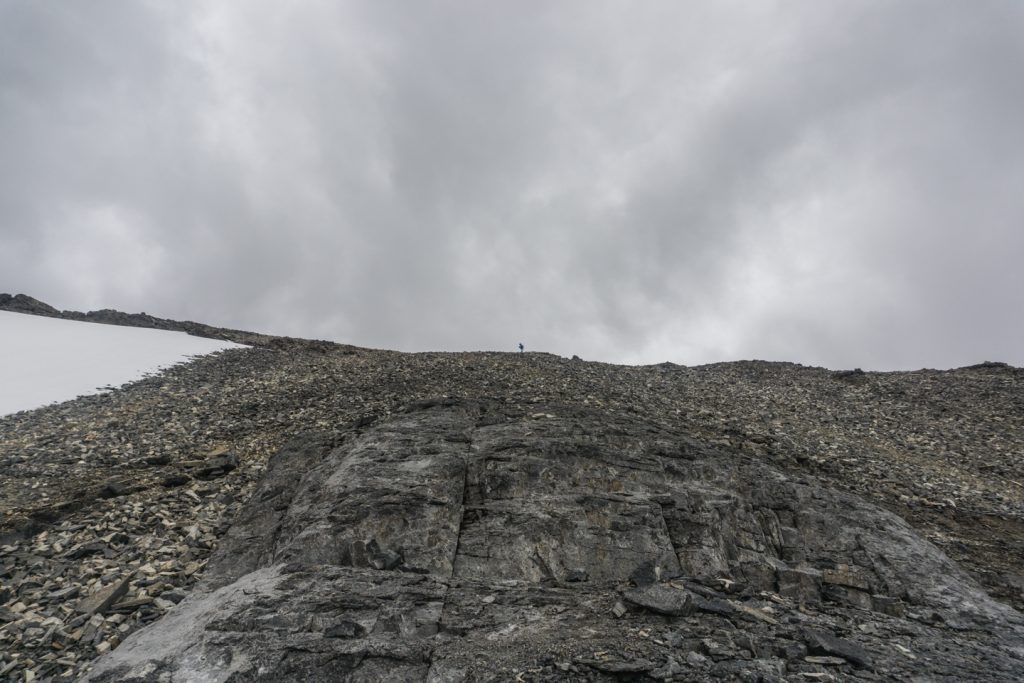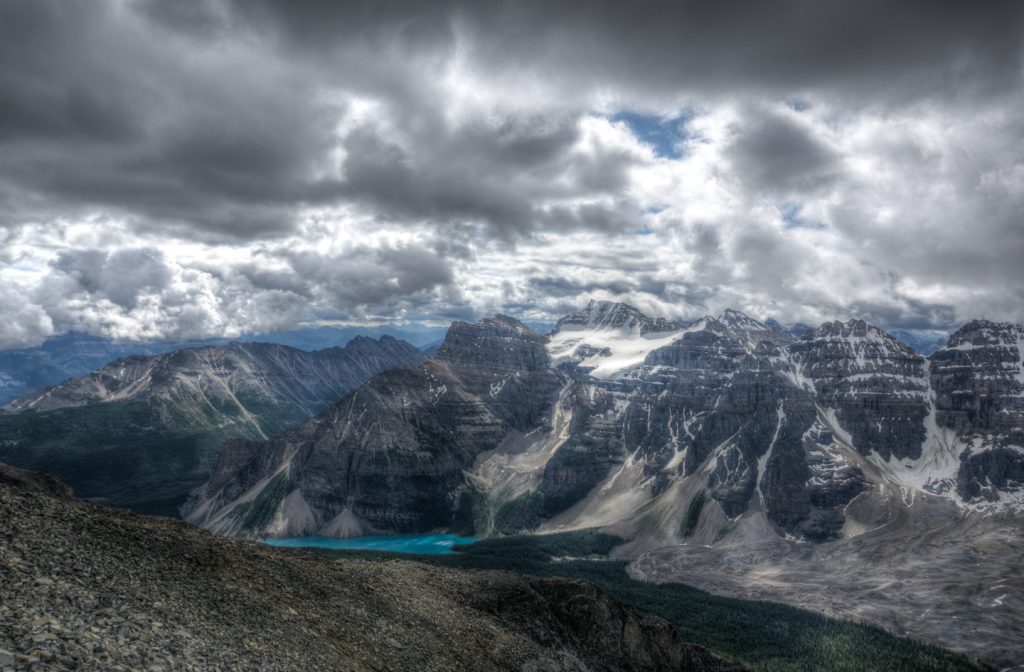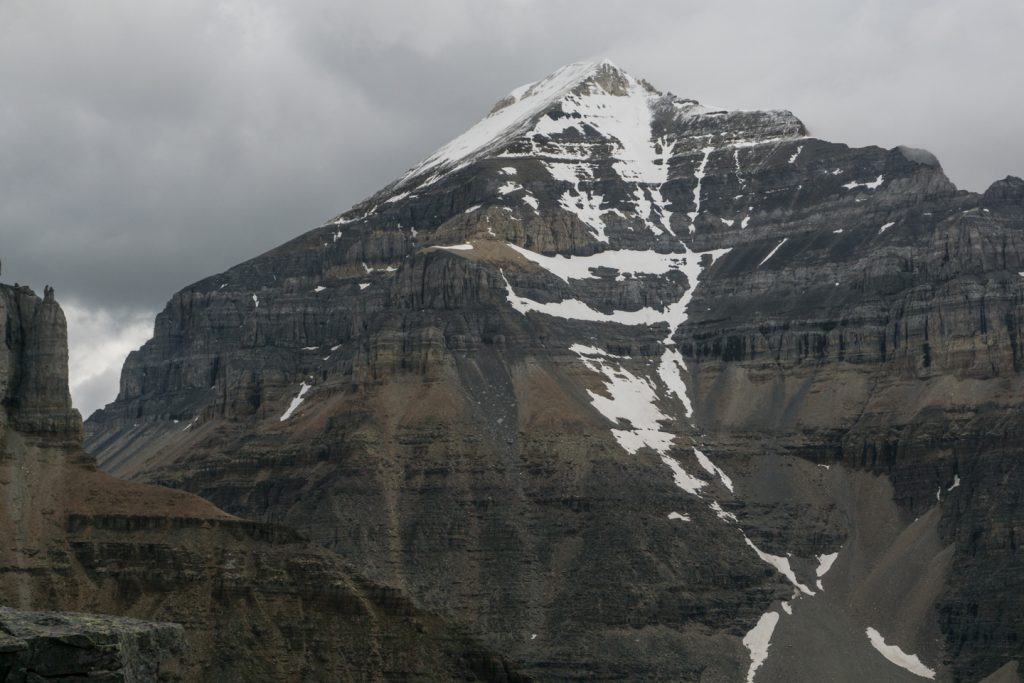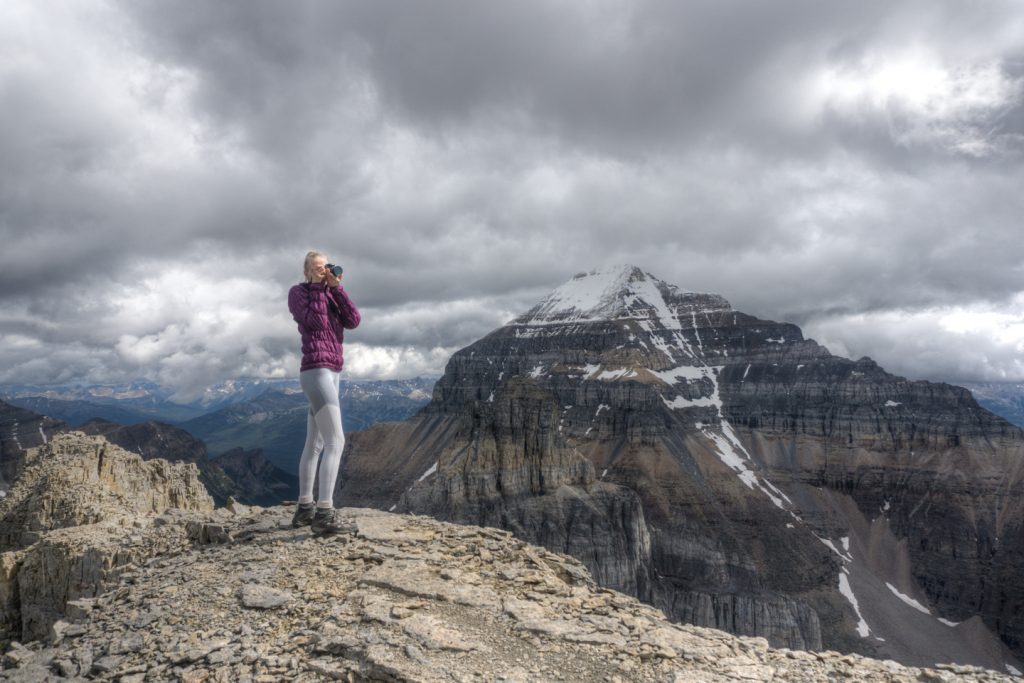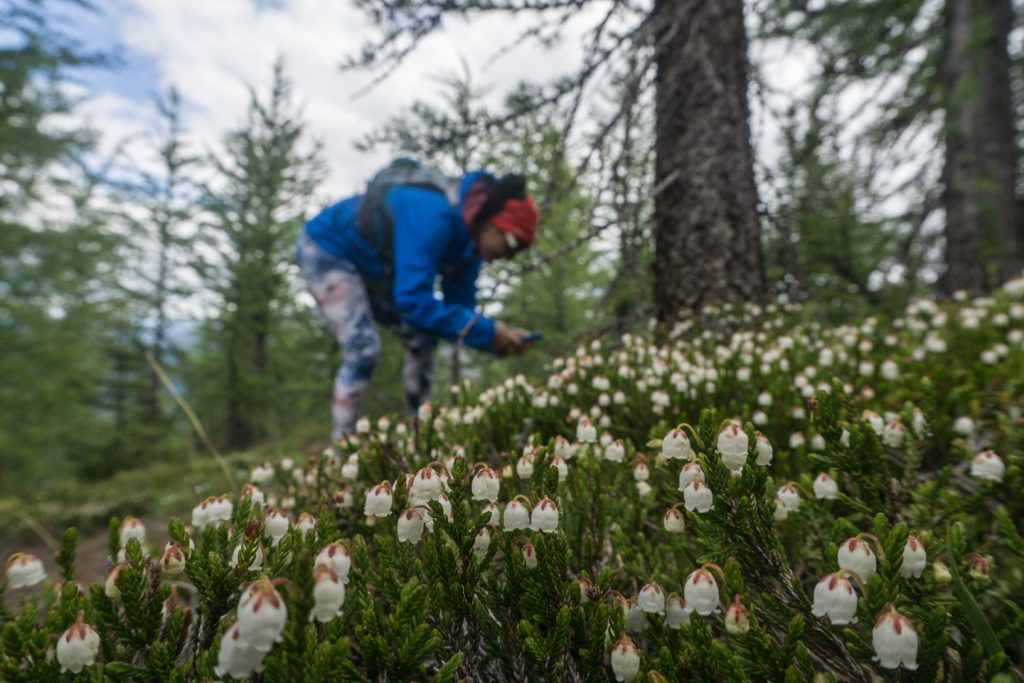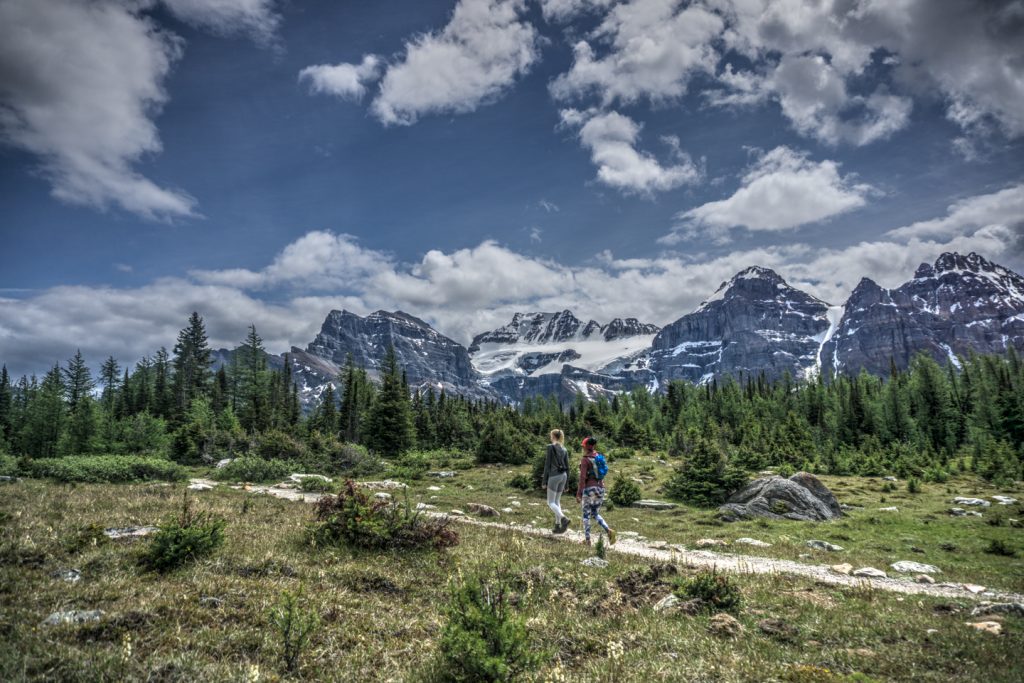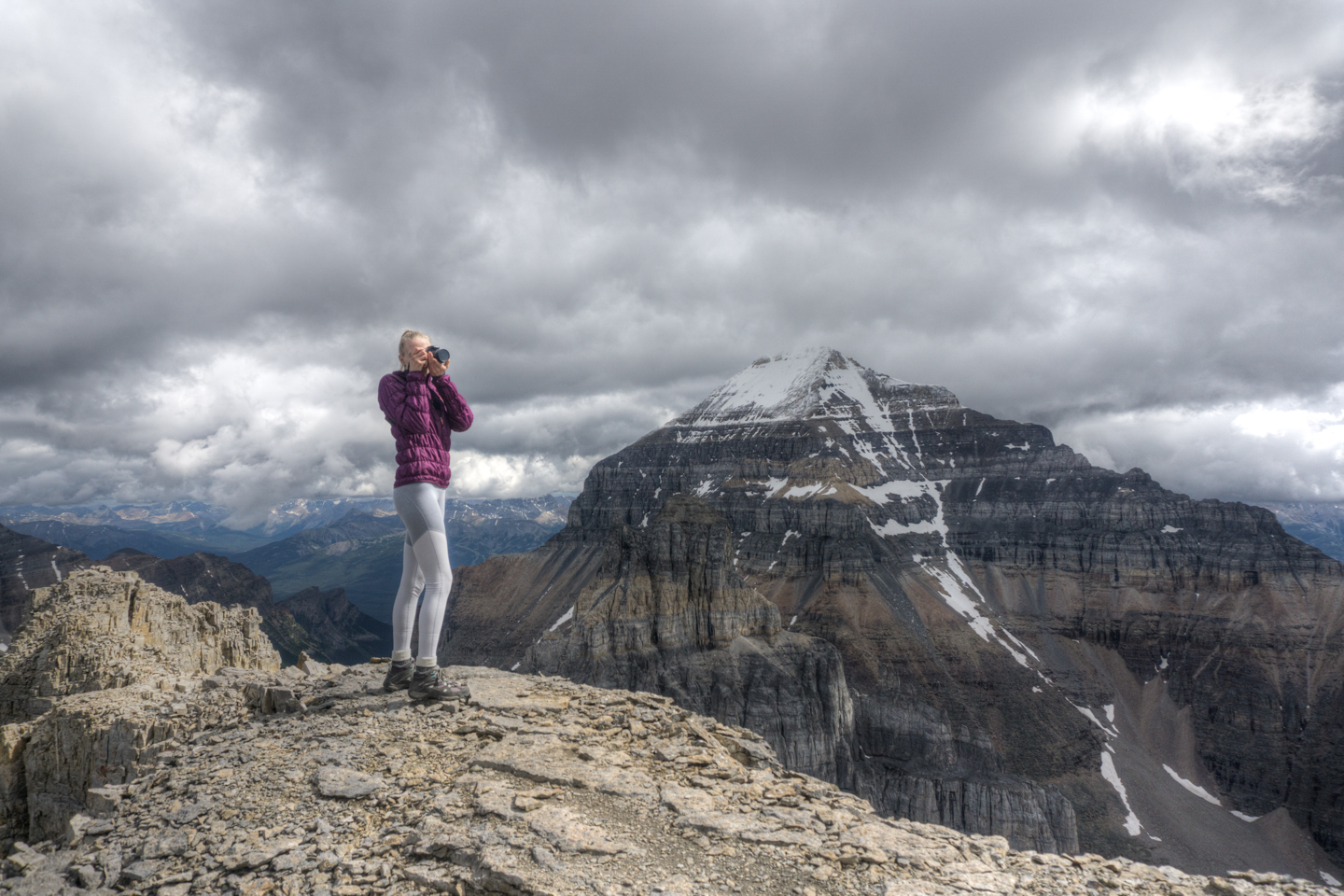This is a peak I’d have never discovered is it wasn’t for Kim, an instagram friend that messaged me out of the blue one day. Some people are cut from the same cloth, and meeting those people seem more like getting reacquainted with an old friend than getting to know someone you’ve never met before. Kim is one of those people.
Mount Temple is a favorite of mine. Generally I don’t slog through trees any more than I have to, and the switchbacks up to Larch Valley are no exception. If I’m going to go up and down that section of grizzly-laden trees, it was only to summit Mount Temple. That was until Kim asked about Eiffel Peak. Her infectious energy is like a vortex of cotton candy – before I knew it, I was scheduled to summit Eiffel a few days later- and I knew I was going to like it.
There are 2 big wins this summit has over Temple:
- It has a fraction of the people. On a bluebird day in the summer, Temple can see up to 100 people attempting the summit. Eiffel had 6, including us.
- From the summit of Eiffel, you can see Temple (among others) in all its glory.
In regards to tiredness factor after the hike, it felt like I’d only done half of Mount Temple. It was a good solid climb with the consistency of a staircase once you started up the ridge. With no prolonged exposure and plenty of edges to peer over that will get your heart racing, this is a great hike for people of all skill levels. In early July, snow cover was very light, only present at higher altitudes where snow load is greatest. This sun-exposed south-facing route will tend to have significantly less snow than you’ll find on other aspects in this area.
Stats
| Trailhead Altitude: | 1890 m (6200 ft) | Trail Length: | 6 km |
| Summit Altitude: | 3084 m (10118 ft) | Difficulty: | Class 3 |
| Net Altitude: | 1194 meters (3917 feet) | Map: | 82 N/08 (Lake Louise) |
| Time to Summit: | 2-4 hours to summit | Total Time: | 5-7 hours return |
Trailhead
From the Moraine Lake parking lot, head between Moraine Lake and Moraine Lodge. Shortly after you pass the lodge and cabins, the trail turns up and to the right (look for grizzly warning sign).
The Trail
Follow the very well maintained trail up the switchbacks till you get to a large wooden bench where the trail forks. Keep right (left takes you to Eiffel Lake) where you’ll find the trail gets a bit smaller and meanders through a larch forest. The forest will thin as you move along until the Ten Peaks unfold before you in an enclosed meadow You will cross a small stream and walk a short distance alongside the trees until the trail bears to the right and starts to climb back into the forest. Here, you have 2 options:
- Direct route: Continue on the trail once it leaves the meadow. After gaining elevation for a few steps, you will see a smaller trail break off to your left. You know you are at the right spot if you can hear water running. Cross the stream (last chance for water) and bear right – the trail will begin to climb toward treeline on the ridge of Eiffel Peak.
- Larch Valley route: Stay on the trail toward Larch Valley until you reach 2 permanent wood benches, one on either side of the trail. Take a sharp left and follow a faint trail directly toward a rocky patch just under treeline on the Eiffel ridge. Dropping elevation as you near the ridge, you will cross a creek (last chance for water) and then head directly up on the right side of the rocky patch. Gain the trail at top of ridgeline where you’ll find a pronounced trail.
As the trail continues up the rocky slope, it begins to braid. While the trail itself is rather obvious, I embarrassingly found myself on an unstable goat trail more times than I care to admit. I’ll blame it on the amazing scenery. Each time we lost the trail, we found it was always only a few meters away. There was also ample cairns, but maybe a bit too many in some sections.
As you climb further, you find the loose rock becomes more abundant. As you reach a large solid outcrop, you skirt to the left, around the bottom of it to find a gully that heads directly up. It appears like a channel that has been cut right out of the rock. On a busy day, this will likely be your biggest risk, as rocks that find themselves liberated from the mountainside can pick up a pretty good head of steam. If you stick close together, you should be able to navigate this without incident. After another short traverse to your left, you’ll find a wide scree (was covered in snow when we arrived). Follow your most comfortable route straight up. Don’t be fooled by the arete to your left, it appears higher as you ascend this last section, but the summit is indeed straight up.
Once you arrive, you will be greeted by a stunning 360° view of Paradise Valley, Mount Temple, Larch Valley, Valley of the Ten Peaks, Wenkchemna Pass, and Mounts Lefroy, Deltaform, and Hungabee which are the most notable nearby peaks along the Continental Divide.
Where to stay
The most comfortable accommodation in the area is Moraine Lake Lodge (ca-ching…) while the most reasonable accommodation is the HI-Lake Louise Alpine Centre (hello, snoring strangers sleeping an arms length away).
The nearest camping is found at the Lake Louise Tent Campground (limited RV spots). Refer to Parks Canada’s rules if you are considering the possibility of an overnight bivi. There are no designated campgrounds and camping is restricted because of the delicate Grizzly bear habitat surrounding the area.
Routes
Download the Eiffel Peak Trail – GPX
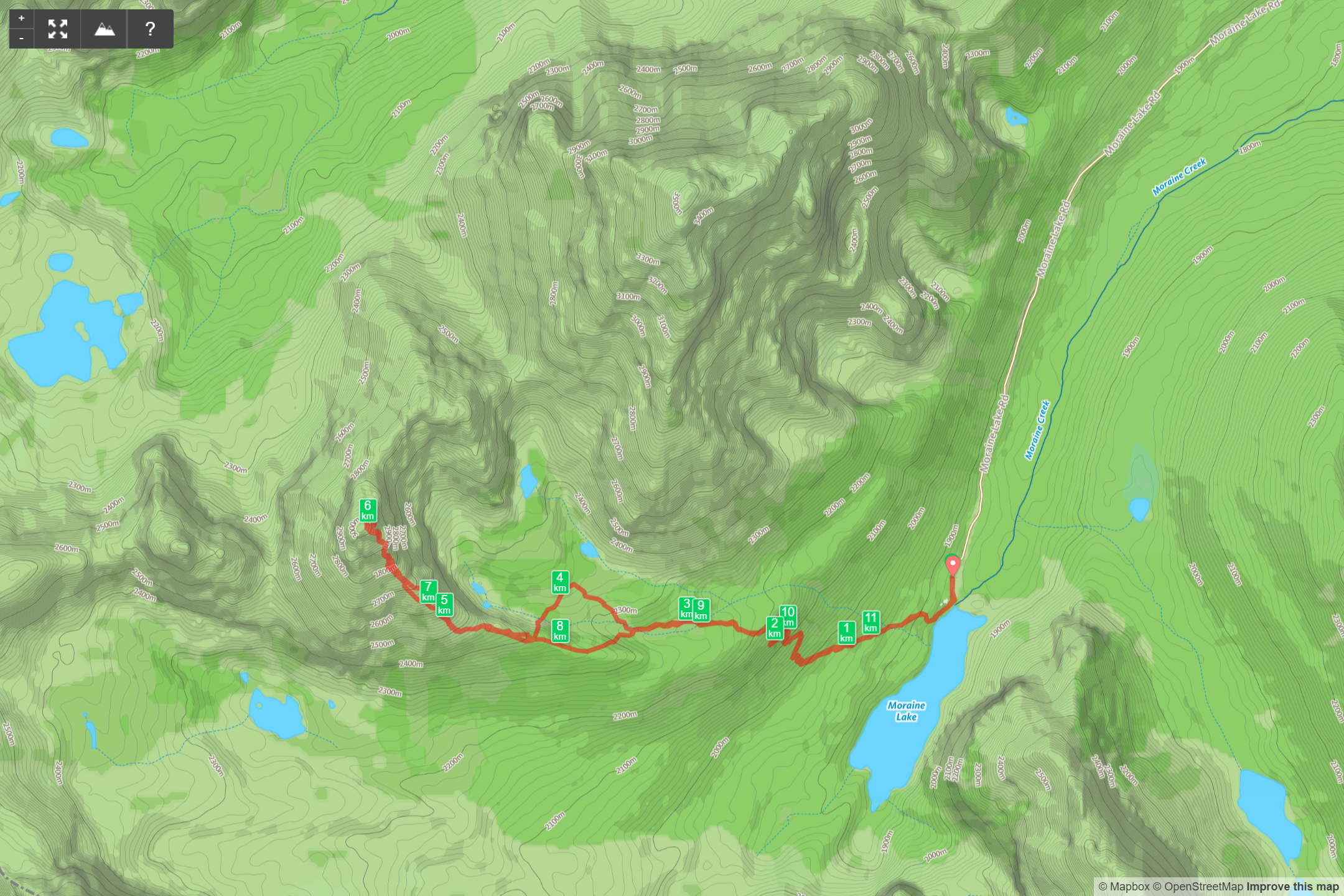

What you need to know
Parks Canada requires:
- an entry pass that can be purchased at the entry gate.
- a backcountry permit (or annual wilderness pass)
- groups of 4 or more traveling through the Grizzly habitat between Moraine Lake and Larch Valley
Pictures

